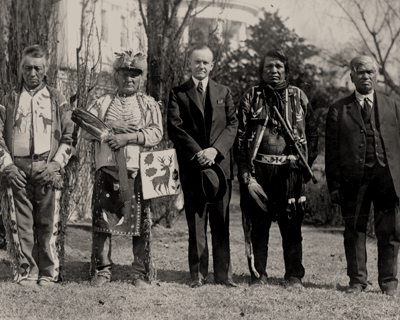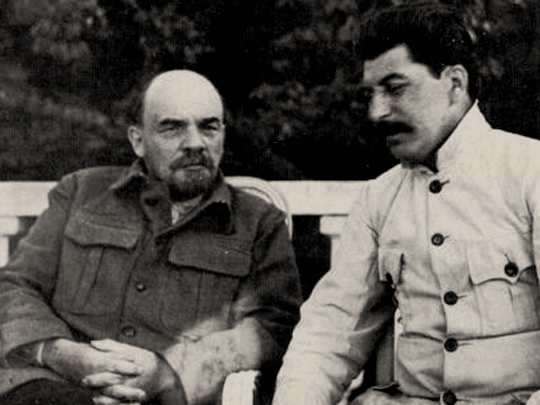By Maria Ilyinichna Ulyanova / Wikimedia Commons / CC-BY-SA-3.0 / GFDL
1 – Stalin Wins Power Struggle After the Death of Lenin
Prior to falling ill, Vladimir Lenin had grown critical of Josef Stalin, and many other Bolsheviks at this time and Lenin recommended Stalin’s dismissal.
However, on March 10, 1923, Lenin suffered a heart attack which left him completely incapacitated.
The subsequent power struggle, during Lenin’s semi-retirement, saw Stalin forge an alliance with Lev Kamenev and Grigory Zinoviev against Leon Trotsky. These allies prevented Lenin’s Testament from being revealed to the Twelfth Party Congress in April 1923.
Although they were disconcerted by Stalin’s power and some of his policies, they needed his help in opposing Trotsky’s faction and his possible succession to Lenin.
Lenin died of a stroke on January 21, 1924, and Stalin was given the honor of organizing his funeral.
Stalin was officially hailed as his successor as the leader of the ruling Communist Party and of the Soviet Union itself. Against Lenin’s wishes, he was given a lavish funeral and his body was embalmed and put on display.
At the Thirteenth Party Congress from 23–31 May 1924, Lenin’s Testament was read out only to the heads of the provincial delegations.
Trotsky did not want to appear divisive so soon after Lenin’s death and did not seize the opportunity to demand Stalin’s removal.
Stalin went to be the General Secretary of the Communist Party of the Soviet Union’s Central Committee from then until his death in 1953.
2 – US Citizenship Granted to All American Indians

The Indian Citizenship Act of 1924, also known as the Snyder Act, was proposed by Representative Homer P. Snyder (R) of New York and granted full U.S. citizenship to America’s indigenous peoples, called “Indians” in this Act.
While the Fourteenth Amendment to the United States Constitution defined as citizens any person born in the U.S., the amendment had been interpreted to restrict the citizenship rights of most Native people.
The act was signed into law by President Calvin Coolidge on June 2, 1924.
It was enacted partially in recognition of the thousands of Indians who served in the armed forces during World War I.
3 – Leopold & Loeb Kidnap and Kill Bobby Franks

On May 21, 1924, two bright, wealthy, Chicago teenagers attempted to commit the perfect crime just for the thrill of it.
Nathan Leopold and Richard Loeb kidnapped 14-year-old Bobby Franks, bludgeoned him to death in a rented car, and then dumped Franks’ body in a distant culvert.
Although they thought their plan was foolproof, Leopold and Loeb made a number of mistakes that led police right to them.
The subsequent trial, featuring famous attorney Clarence Darrow, made headlines and was often referred to as “the trial of the century.”
Both men were sentenced to life imprisonment plus 99 years. Loeb was killed by a fellow prisoner in 1936; Leopold was released on parole in 1958.
The Franks murder has been the inspiration for several works of film, theatre, and literature, including Patrick Hamilton’s 1929 play ‘Rope’ and Alfred Hitchcock’s 1948 film of the same name.
